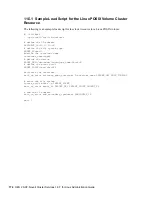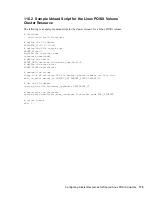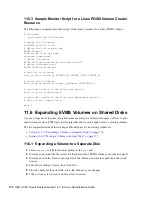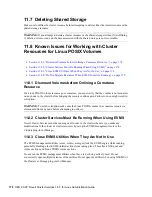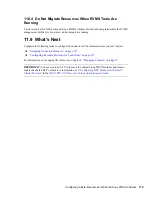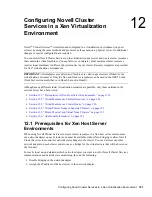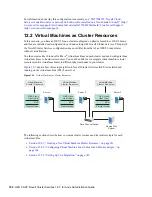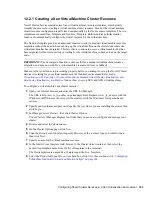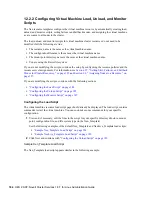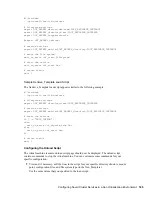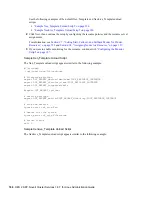
188
OES 2 SP2: Novell Cluster Services 1.8.7 for Linux Administration Guide
no
vd
ocx
(e
n)
7 Ja
nua
ry 201
0
6
Specify the number of failures (
Maximum Local Failures
) for the specified amount of time
(
Time Interval
).
If the resource monitor detects that the resource fails the number of times specified in the
amount of time specified, a failure action initiates.
7
Specify whether you want the resource to be set to a comatose state, or to migrate to another
server if the failure action initiates.
If the failure action initiates and you chose the option to migrate the resource to another server,
the resource migrates to the next server in its
Assigned Nodes
list. The resource remains on the
server it has migrated to unless you migrate it to another server or the failure action initiates
again, in which case it again migrates to the next server in its
Assigned Nodes
list.
With resource monitoring, the
Failover
,
Failback
, and
Start
modes have no effect on where the
resource migrates. This means that a resource that has been migrated by the resource
monitoring failure action does not migrate back to the node it migrated from unless you
manually migrate it back.
Viewing or Modifying the Monitor Script
To view or customize the monitor script for the virtual machine’s cluster resource:
1
In iManager, click
Clusters
, then click
Cluster Options
.
2
Browse and select the Cluster object.
3
Select the check box next to the virtual machine resource that you created, then click the
Details
link.
4
Click the
Scripts
tab, then click the
Monitor Script
link.
5
View or edit the commands in the script that monitor the resource on the server.
You can use the same commands that would be used at the Linux terminal console.
See the following examples of the default Xen_Template and XenLive_Template monitor
scripts:
“Sample Xen_Template Monitor Script” on page 188
“Sample XenLive_Template Monitor Script” on page 189
6
Specify the
Monitor Script Timeout
value, then click
Apply
to save the script.
The timeout value determines how much time the script is given to complete. If the script does
not complete within the specified time, the failure action initiates based on your settings in
Step 7
of
“Enabling Resource Monitoring” on page 187
. Cluster Services marks the monitor
process as failed right after the defined timeout expires, but it must wait for the process to
conclude before it can start other resource operations.
Sample Xen_Template Monitor Script
The Xen_Template monitor script appears similar to the following example:

